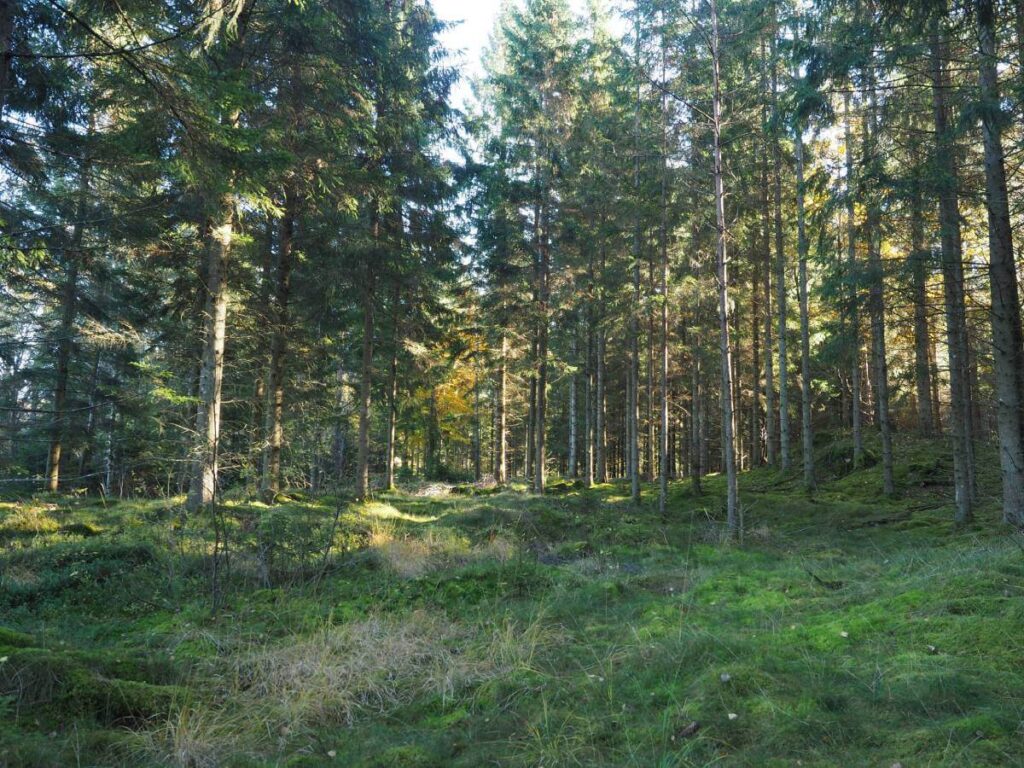As you embark on the exciting journey of building your new home, it’s important to consider all aspects of the construction process – including the often-overlooked topic of wastewater and sewage management. Properly addressing these systems can save you headaches and costly repairs down the road, as well as protect the environment and ensure the health and safety of your family.
In this post, I’ll cover the key considerations to keep in mind when it comes to wastewater and sewage management in Sweden and focus on the most popular solution – a three-chamber well, which is also what I will be getting on my own plot of land.
What is your situation?
If you are buying a plot of land to build a house in Sweden you are usually faced with the need to address wastewater and sewage, there are a few common scenarios:
In an urban area
If you build in an urban area you may already have a connection to municipal services on your land, or at least easy access to connect to one. In small villages, there may be a community sewage system which you could connect to as well.
On a remote plot
It could be that you are buying a more remote plot with an old building you plan to renovate or tear down and build anew. There may be an old sewage solution in place. If that’s the case, you still may need to update and change your wastewater system depending on its age and construction.
On an empty plot
If you are building on an empty plot in a remote area, or even just outside an urban area, there will likely be no municipal services. So you have to build your own solution to manage your wastewater and sewage.
I’ll focus on the latter scenario. But let’s start with the basics.
Your responsibilities as a property oner
As a property owner, you are obliged to ensure you have a way of handling sewage and that the sewage system works. Meaning that the wastewater not only flows away but is also sufficiently cleaned. And any residual waste is collected annually by the local authorities.
In Sweden for the construction and replacement of wastewater and sewage systems, there are regulations that need to be adhered to and of course, you are required to apply and pay for any permits needed by a local authority.
Considerations for wastewater and sewage
There are a few key things to consider when planning your wastewater and sewage solution: types of wastewater, the smell from the treatment, quantity, placement, quality of soil and drainage and aesthetics. Let’s get a bit more specific:
Types of wastewater
There are a few types of wastewater that will be discharged from your house;
- toilet or WC waste (black water)
- bath laundry
- dishwater (abbreviated to BDT in Swedish).
With various solutions to handle them. Rainwater is almost always handled separately so as not to overwhelm any system you install.
A common solution is that WC waste and BDT wastewater all go into one system, and are treated together as mixed wastewater.
Alternatively, you could install a solution where toilet water is separated from BDT wastewater, and treated separately.
Another solution could be to install a dry or burning toilet where solid and liquid toilet waste is burned. With other mixed wastewater flowing into a separate system.
The system you choose will largely depend on a few factors;
- how often you will be using your property
- cost
- the terrain
- and possibilities on your land
The smell from the treatment
There is also smell to consider, not that it’s likely, but placing your sewage system away from your house and downwind makes sense. Asking a local about general wind direction is a good idea.
Quantity
It is also important to ensure that any wastewater and sewage system you install can handle the volume produced by the household. So larger properties may need a more capacious and efficient system than smaller ones.
Placement
You do not want your drinking water and your waste water to mix. So choosing the right place for your sewage system in relation to a freshwater well is key. The wastewater should flow away from the freshwater, so consider the grading on the land and the finished floor height (FG) of your house.
As you are required to empty any residual waste from a system annually, it is important to consider access for what may be quite a large vehicle.
Quality of soil and drainage
Before any contractor will install a sewage system and as a requirement permit applications, a soil sample will be needed. This ensures that any filtration of wastewater into the ground on your land will be effective for the system and construction chosen. This can have an impact on the visibility and placement of your system.
Aesthetics
Most of the sewage systems that you can install are subterranean, which means they can be hidden from view. However, depending on the quality of the soil and the terrain on your plot, there may be some solutions that are more visible than others. The visibility of these and placement should be addressed with your contractor.
What wastewater and sewage options are available?
There are several wastewater and sewage options available to you that you can purchase and construct.
Three-chamber well with a pump
The three-chamber well (trekammarbrunn in Swedish) is by far the most common new installation for plots with no municipal service connection, which are fairly remote, yet accessible by vehicles. It can handle all toilet or WC water (black water) and bath laundry and dishwater (BDT) and is usually used in conjunction with a purification system.
It is a three-chamber system, constructed in solid plastic, designed to be placed under ground level. There are a few varieties, all will have an inflow from the house and an outflow to be connected to another tank, or usually a filtration system which releases filtered wastewater into the ground where it is further purified.
The first chamber gathers most of the solid toilet waste and suspended particles such as fats. The second chamber continues this gathering of sludge. The third chamber ensures that few solid particles exit. Water that leaves is not purified, but ready for purification.
There are a number of systems to buy, usually called three chamber well or sludge separators. They can contain some kind of pump to push the water out of the third chamber and onto, for example, a filtration system.
Mini sewage treatment plant
There is another option for treating all kinds of wastewater from the house including solid and liquid toilet wastewater, basically all mixed wastewater. This is used in conjunction with a sludge separator or three-chamber well, especially when there are challenges with the surrounding soil or local environmental protection requirements.
In principle they work the same way municipal treatment plants handle wastewater and sewage; with sedimentation, chemical and biological phases.
It has an inflow coming from the tank to collect solid waste and suspended material such as fats. This is either as part of the mini sewage treatment plant or installed separately. And it has an outflow which would continue to a filtration system.
Inside there are units to manage pump flow, and aeration systems to encourage microbial action and the dispersal of any chemicals. Again this is not a stand-alone system but part of the process when infiltration is not possible.
Infiltration
Infiltration is part of a purification process, where wastewater from a three-chamber well or a mini sewage treatment plant, is dispersed into the ground on your property.
It is subterranean and sits underground level, however depending on your soil it can be in a raised bed, so think carefully about where you want it placed. It also needs to be placed so water can flow in and out effectively.
It contains a distribution chamber where water is evenly distributed to a series of pipes with small holes. These pipes lie on gravel which in turn is buried by soil. The water then seeps out of the pipes and gradually will be purified by the surrounding soil.
What do I need for my sewage and wastewater treatment?
- Assessment of how to treat the wastewater from your house
- Consideration of placement in relation to the freshwater, soil and land
- Permits
- The right system based on the size of your household, the local environment and your use
- A system that is connected to your house to deal with solids
- A secondary system that either disperses the water or helps to purify it
How much does a three-chamber well cost?
The price of a three-chamber well will vary depending on your property location, the size of your household, which system you choose. But for a small single-family dwelling with moraine soil and no complicated environmental protection issues, you could expect in 2022 to be charged around 90,000 SEK to 150,000 SEK excl. moms (VAT) and including labour and parts for a three-chamber well, pump and infiltration.

